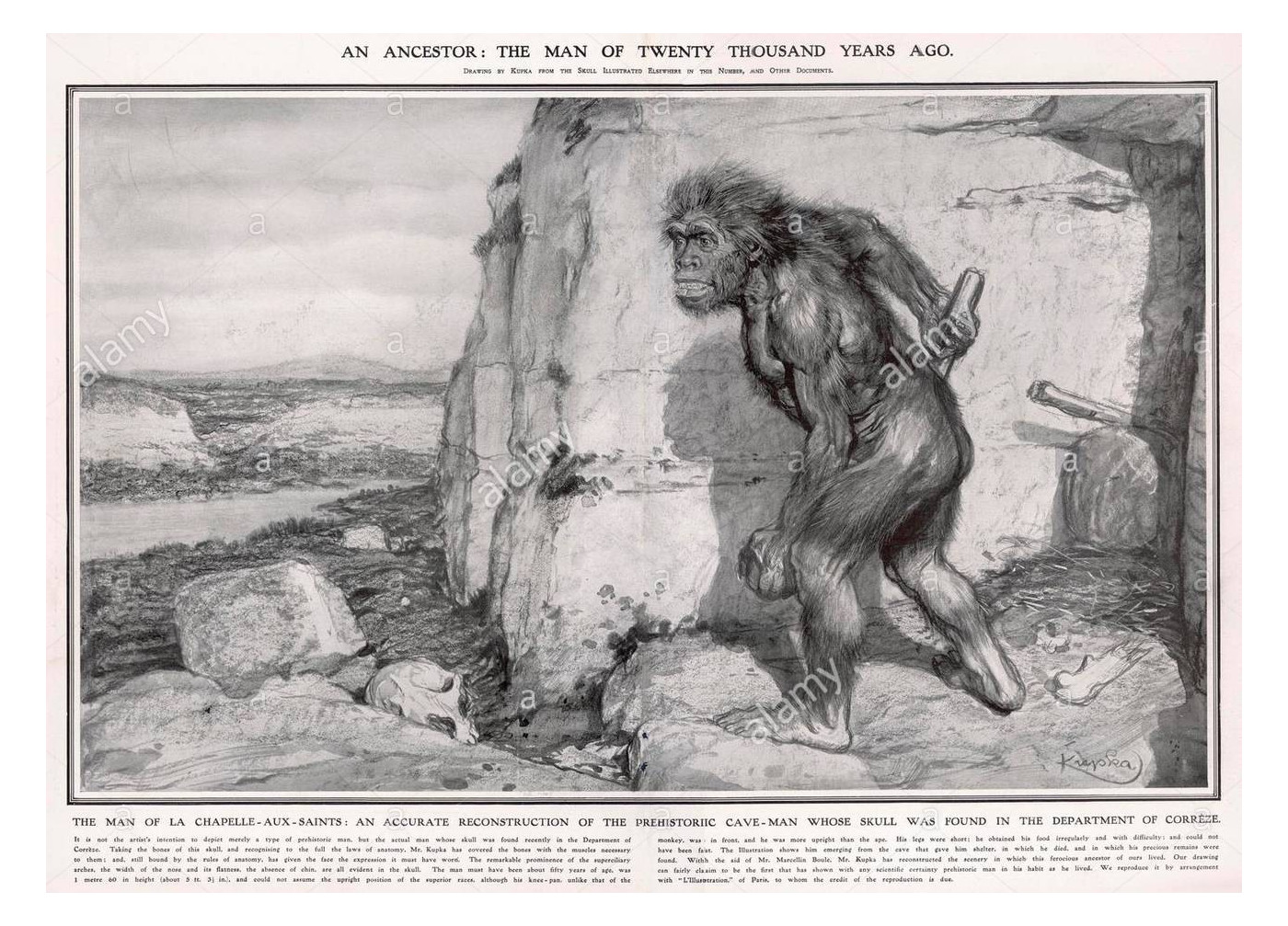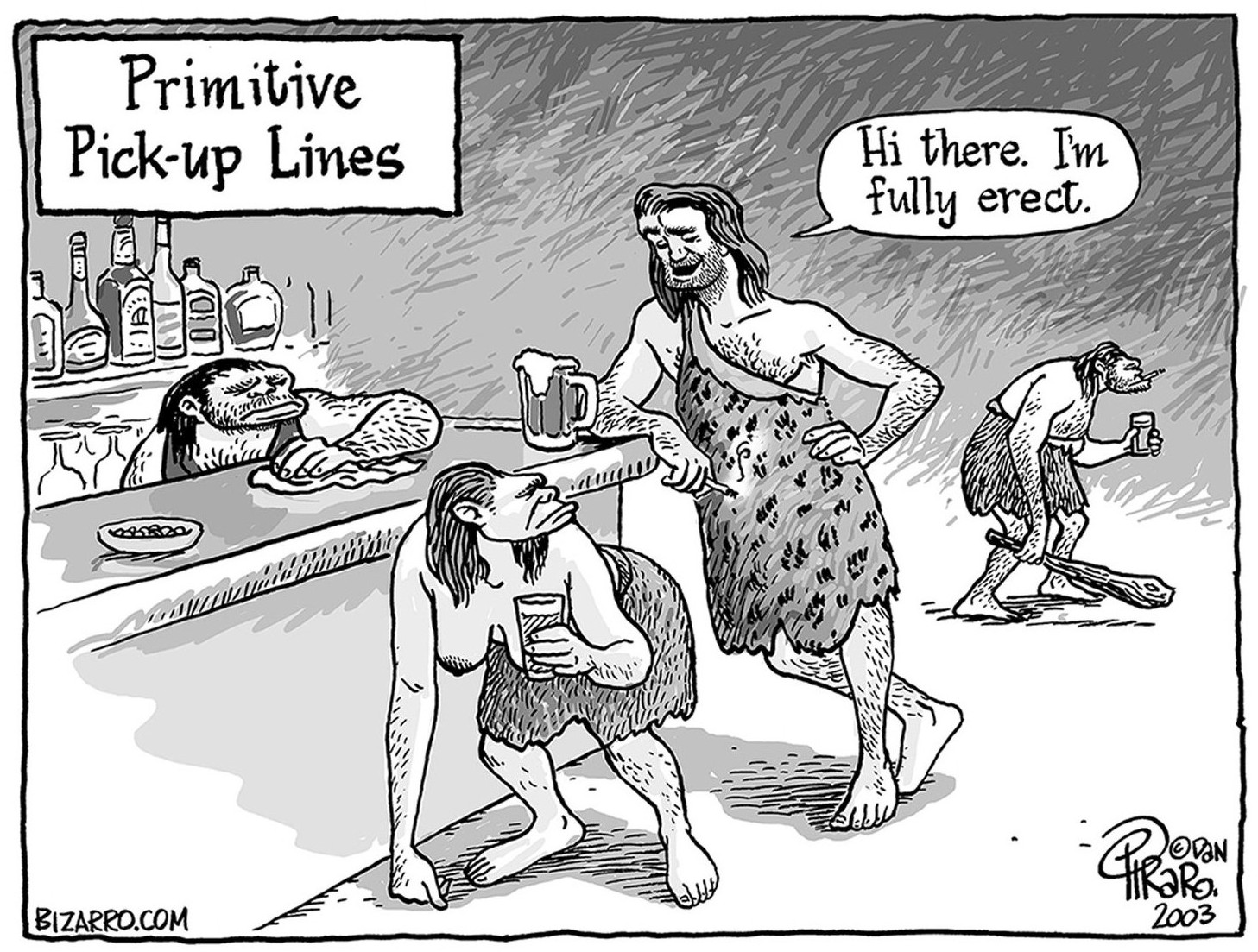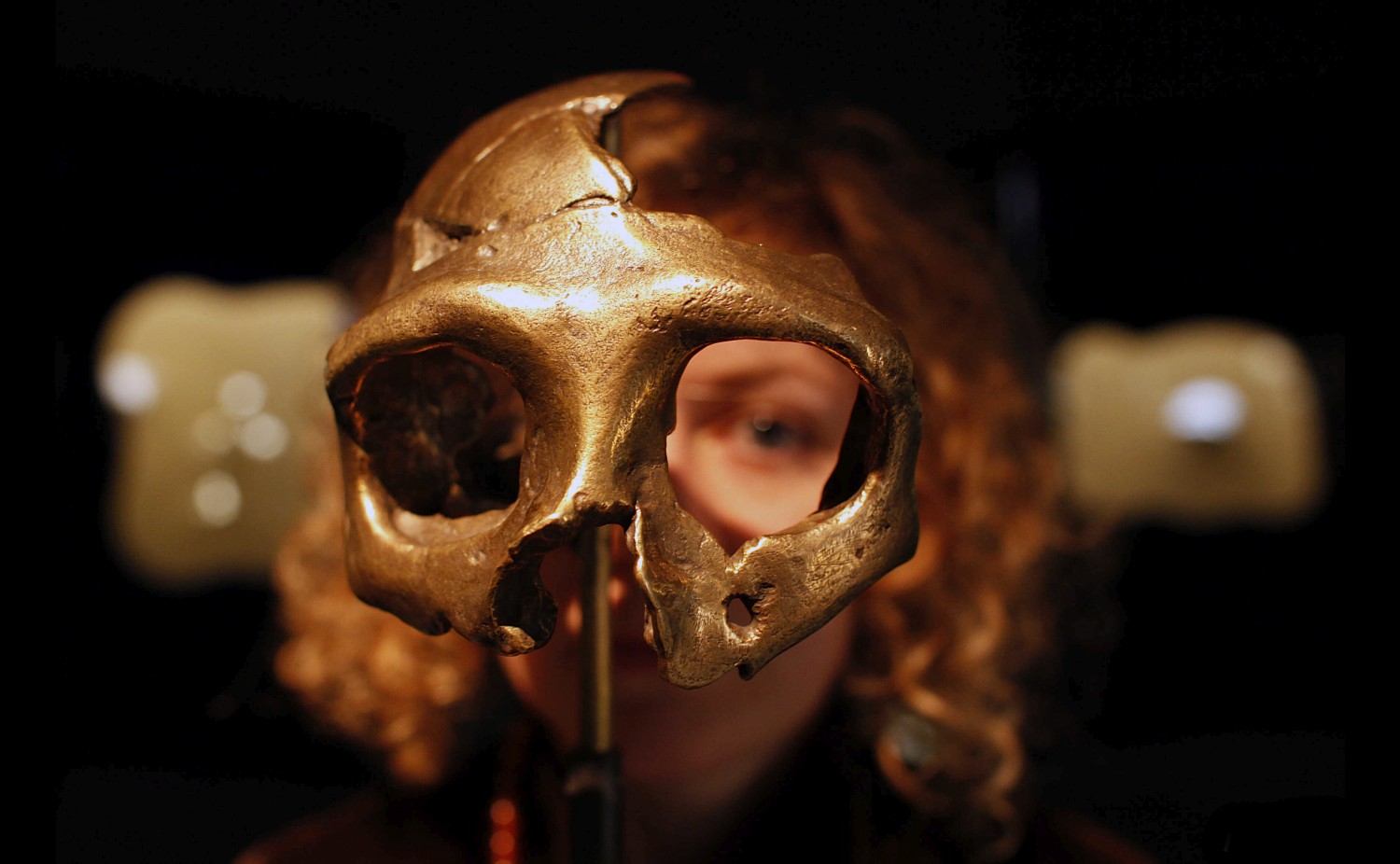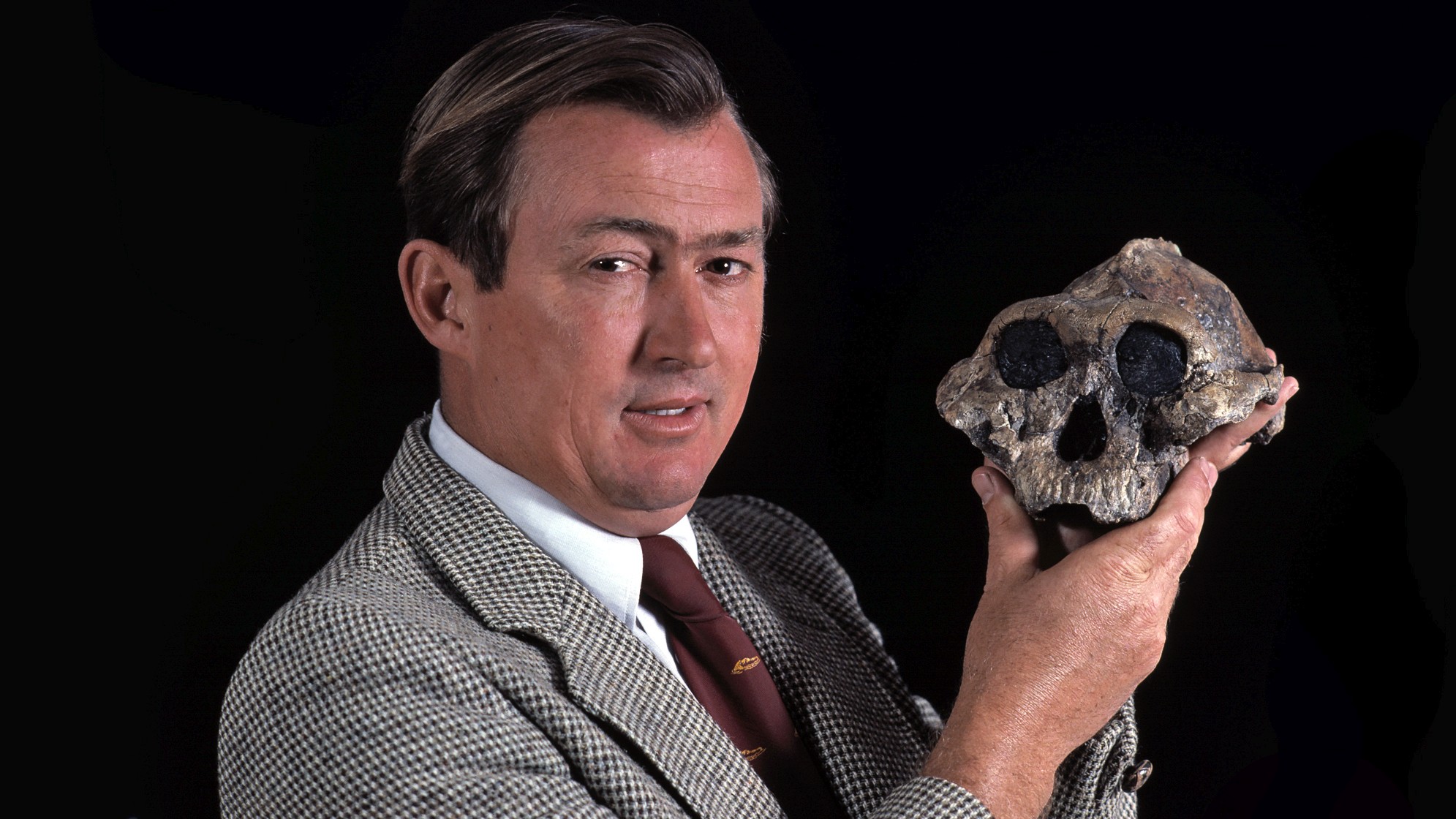Neanderthal Man
Looks can be deceiving
The Neanderthal Man is a classic example of the evolutionairy apeman just-so story which is used until this day to support their monkey theory. Today the Neanderthal Man is regarded as a subspecies of Homo Sapiens because of interbreeding and the discovery of much evidence showing that the Neanderthal Man was just like humans, not a hairy brute ape-like precursor of humans as he was always presented by evolutionists.
Evolutionary misrepresentation
The picture of Neanderthals as hulking ape-men dates back to 1908 and the discovery of the "Old Man of La Chapelle-aux-Saints." The La Chapelle fossil was the most complete skeleton of a Neanderthal ever recovered, and it provided a unique opportunity to understand the characteristics of this intriguing hominin. The task of analysing the skeleton fell to Marcellin Boule, a prominent paleoanthropologist who came to the job convinced that Neanderthals were "a degenerate side branch of human evolution" (Bowler 1986, 88). Not surprisingly, the portrait that emerged from Boule's analysis was a hairy, stooped creature.
From the 19th century onwards evolutionists misrepresented the Neanderthal as some hairy brute precursor to human beings based solely on their preconceived worldview. The result is that many ignorants around the world believe it because it became part of a mental construct. See also Paradigm Paralysis. Natural history museums around the world are literally filled with these misrepresentations. But science has made progress in the last decades. Even pro-evolution website Talk.Origins stated:Older pictures tend to show Neandertals as more ape-like and primitive, while modern depictions are more like modern humans.*
Looks can be deceiving
source
To attempt to restore the soft parts is an even more hazardous under-taking. The lips, the eyes, the ears, and the nasal tip, leave no clues on the underlying bony parts. You can with equal facility model on a Neanderthaloid skull the features of a chimpanzee or the lineaments of a philosopher. These alleged restorations of ancient types of a man have very little if any scientific value and are likely only to mislead the public... So put not your trust in reconstructions.
In order to sell their monkey theory to the world mainstream science organizations pay artists like Alfons and Adrie Kennis to reconstruct models based on bones and skeletons, based on the evolutionary worldview. But only very recently, since the beginning of the 21st century, scientists are discovering methods to somewhat determine looks based on skeletons and bones. In 2007 Genetics published an article saying:Imagine trying to describe an entire culture based on a few skeletons. Now imagine that those bones are 40,000 years old. Sounds pretty tricky, huh? But scientists in Spain and Germany are starting to do just that.Up until then there was no scientific way to know how a life form looked based on bones and skeletons alone. All the illustrations up until recently have been based on metaphysics and a preconceived belief and they were of course used to propagandize evolution theory.
Interbreeding
In 2010 New Scientist reported that humans and Neanderthals had sex and had hybrid offspring.* In 2012 Nature reported:The Neanderthal disappearance is viewed by some as a true extinction. Others however, contend that Neanderthals did not become extinct, but instead were assimilated into the modern human gene pool.* In 2016 Nature reported:The discovery of yet another period of interbreeding between early humans and Neanderthals is adding to the growing sense that sexual encounters among different ancient human species were commonplace throughout their history.*
More and more research in the 21st century confirms interbreeding of Neanderthal with modern humans. In general, interbreeding is regarded as a very strong indication of belonging to the same species.
Just like humans
Scientists used to think that Neanderthals were our dumber, less evolved cousins — not the artistic type. But research over the past decade has revealed a rather different picture. We now know that Neanderthals probably cooked their food and made tools for hunting and fishing. They were also culturally more sophisticated than previously thought.*
These so-called "scientists" must have been evolutionary scientists because true scientists would have known that it wasn't scientific to begin with. In 2003 Time Magazine reported that new fossils prove that the first Homo sapiens looked like us, walked like us and in some ways acted like us as well.* In 2010 UC Denver reported:For decades scientists believed Neanderthals developed 'modern' tools and ornaments solely through contact with Homo sapiens, but new research from the University of Colorado Denver now shows these sturdy ancients could adapt, innovate and evolve technology on their own.* In 2012 National Geographic reported about cave paintings thatit adds to evidence Neanderthals were not a distinct species.*
Evolutionists always displayed Neanderthal Man as a savage. In reality he was just like humans.
Human evolution?
Judged by the amount of evidence upon which it is based, the study of fossil man hardly deserves to be more than a sub-discipline of paleontology or anthropology. ... the collection is so tantalisingly incomplete, and the specimens themselves often so fragmentary and inconclusive.*
In 1978 Mary Leakey discovered at Laetoli in Kenya a fossilized trail of 70 humanlike footprints marked out some 3.7 million years ago. But with this notable exception, the known fossil remains of man's ancestors would fit on a billiard table. That makes a poor platform from which to peer into the mists of the last few million years from which the hominid line suddenly emerged. Those who skillfully uncover the rare fossil remains of man's past make a lasting contribution to knowledge. The interpretations of this evidence have so far proved more ephemeral.*
The early theories of human evolution are really very odd, if one stops to look at them. David Pilbeam has described the early theories as 'fossil-free.' That is, there were theories about human evolution that one would think would require some fossil evidence, but in fact there were either so few fossils that they exerted no influence on the theory, or there were no fossils at all. So between man's supposed closest relatives and the early human fossils, there was only the imagination of nineteenth century scientists. People wanted to believe in evolution, human evolution, and this affected the results of their work.
There are many more reconstructions and misrepresentations of supposed apemen imagined by evolutionists than there are fossils on which they are based.
Monkey business
Fanatic evolutionist Richard Leakey once said:We hope to find more pieces of the puzzle which will shed light on the connection between this upright, walking ape, our early ancestor, and modern man.* Talking about evolutionists he said:We are just an ape.* It's not only silly, it's also dehumanizing. Evolutionists desperately hope to find missing links to fit with their fanatic belief system. See for example Tiktaalik and Ida. These silly missing links are always controversial from the start and turn out to be false or explainable in support of other worldviews as well. As William James rightfully said:Belief will help create the fact.
Evolutionists base their timeline of human evolution on the very few bone and skull fragments* that have been found. The Neanderthal Man goes back in time 30,000 to 500,000 years and is supposed to be the best known example for so-called "human evolution" presented by evolutionists. There is even less information about species dating back millions of years although evolutionists wildly speculate with very incomplete fossils of which many are merely bone fragments. Their complete timeline is based on the unprovable philosophies uniformitarianism, naturalism and metaphysics. Aaron Joshua Howard said thatanthropologists are constrained by the pressures of naturalistic presuppositions that need to explain.
See paradigm paralysis. It's monkey business.





